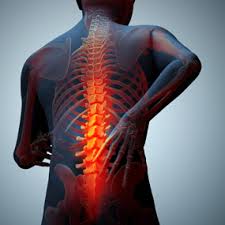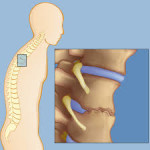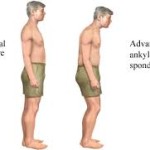 This particular condition does not follow a specific course of events, but rather will vary widely between people. However, common complications include difficulty walking or standing, difficulty breathing, inflammation in the eyes, inflammatory bowel disease, anemia and heart problems. Difficulty walking or standing is a result of the joint fusion in the back and SI joints. Because the inflammation can cause the bones in the rib cage to fuse, it results in breathing problems.
This particular condition does not follow a specific course of events, but rather will vary widely between people. However, common complications include difficulty walking or standing, difficulty breathing, inflammation in the eyes, inflammatory bowel disease, anemia and heart problems. Difficulty walking or standing is a result of the joint fusion in the back and SI joints. Because the inflammation can cause the bones in the rib cage to fuse, it results in breathing problems.
Complications with inflammation in the eyes occur in up to 40% of the individuals who suffer from this disease. It results in rapid onset of eye pain, sensitivity to light and blurred vision. Individuals who noticed the symptoms should seek the care of their physician immediately in order to decrease the risk of any long-term effects to the eyes. (5)
If the inflammation reaches the heart muscle valve problems can develop resulting in regurgitation and distortion of the essential structures in the heart. Rare complications include scarring of the heart’s electrical system which causes an abnormal slow heart rate requiring the insertion of a pacemaker.
As the disease advances, individuals can experience deposits of a protein in the kidneys resulting in kidney failure. Progressive kidney disease will lead to chronic fatigue and nausea requiring consistent kidney dialysis to eliminate the accumulated waste products in the blood. People who have Ankylosing Spondylitis are not candidates for kidney transplants.
Diagnosis is based on evaluation of symptoms, imaging results and blood tests. The physician will do a thorough medical history, physical examination, order x-rays to determine any abnormalities of the spine and a blood test looking for the genetic marker. Sedimentation rate (another blood test) is a non-specific blood test looking for evidence of inflammation in the body.
Treatment modalities use medications to reduce inflammation and to stop the progression of the disease while physical therapy and exercise will help to support the motion of the joints. Individuals who suffer from symptoms outside of the spine and SI joint may not respond to nonsteroidal anti-inflammatory treatments alone and may require medications that suppress the body’s immune system, such as sulfasalazine. Another alternative is methotrexate which can be injected or taken orally.
References:
(1) American Family Physician: Spondyloarthropathies
http://www.aafp.org/afp/2004/0615/p2853.html
(2) Therapeutic Clinical Risk Management: Update on the Treatment of Ankylosing Spondylitis
http://www.ncbi.nlm.nih.gov/pmc/articles/PMC2387283/
(3) NHS Choices: Anykylosing Spondylitis – Complications
http://www.nhs.uk/Conditions/Ankylosing-spondylitis/Pages/Complications.aspx
| Advertisement | |
 |
|


Leave a Reply